Graham Collins and Jennie Jieun Lee
I know almost nothing about art. But one thing that – it seems to me anyway – Jennie’s work and Graham’s work have in common is that you can see the process of its creation in the final product, the traces of all the materials and labor that went into making it: whether the warps and waves of porcelain or plops of glass or the fingers in the twisting clay torsos of tall vases shaking their glazed bellies, the drips and crackles across the faces of her masks, or the de- and re- and un- construction of his objects, in which one can always see what destroyed or rescued things they are made of and what has been done –the pool turned on its side and swathed in paint to become a monumental sculpture that is still a pool, you could flip it back over and swim in it, or slices of old paintings that become new paintings, or a matchbook that becomes a brass sculpture then is burnt again. Nothing is hidden. Nothing lies. Nothing tries to hide the fact that somebody made it out of something else.
Maybe that is the process that all of these materials go through: from raw materials – earth, water, glass, wood, metal, paint – to crafted materials undergoing the labor of human hands on their way to becoming artifacts, made things that might have a role, a use – bowls, vases, wood chips, pork rinds, matches, barns, pictures of people and places – and then, finally, turning into things that exist just for themselves, that are useless but alive, just like us: works of art.
That’s what I mean to say: The structure is completely exposed and the entire process is present in the finished thing, if finished is even the right word. Are we finished? Not while we are still alive. And that is what I always imagine works of art aspire to be: living things, independent objects that live their own lives, among us, but not necessarily for us, nor for their makers. They carry on without us. (This is the sense in which an artwork can be finished, I guess. Complete. It is ready to go out on its own.) Like knowing someone else is at home even when you can’t see or hear them makes the house feel different, even if they are asleep, even if it is just a cat asleep, or a plant invisibly growing. They change the atmosphere. This is how I feel about art or even books. They are sitting there on the shelf like loaded objects, awaiting their chance to act. Or sleeping there, dreaming as we look at them. Or maybe looking back at us while we work or sleep.
(I realize I am doing a very bad job of describing the actual art.)
This makes me think of the fact that Jennie and Graham also live with each other, share the same space and all kinds of useful objects, and even a cat actually, while each carrying on with his or her own work – eating, sleeping, talking, traveling together, but not working together. Until now. This exhibit is the first time they have collaborated on the work itself. And what immediately struck me about the project is that they have once again left the history of this work exposed, raw and there for all to see: parts by Jennie and parts by Graham. Rather than melt it together, I mean, and try to lose themselves in one new thing, where you can’t tell who did what, here you can see right away that there are elements of her work and his work now taken apart or broken down or recycled into a new construction, her vessel full of his metal flowers, a latticed wood bouquet, shards of old paintings set to bloom before her tiles set in his walls.
So really it is the whole exhibit that is the collaborative work, and which fills this space called the Viewing Room. The name fits because it actually is a room they have built and filled and decorated and which we are invited to live in for a while, with them and the living things they’ve made for and out of each other and themselves. And of course that is what we are invited to view: The way two people work at living and have collaborated on a life.
-David Gordon
-
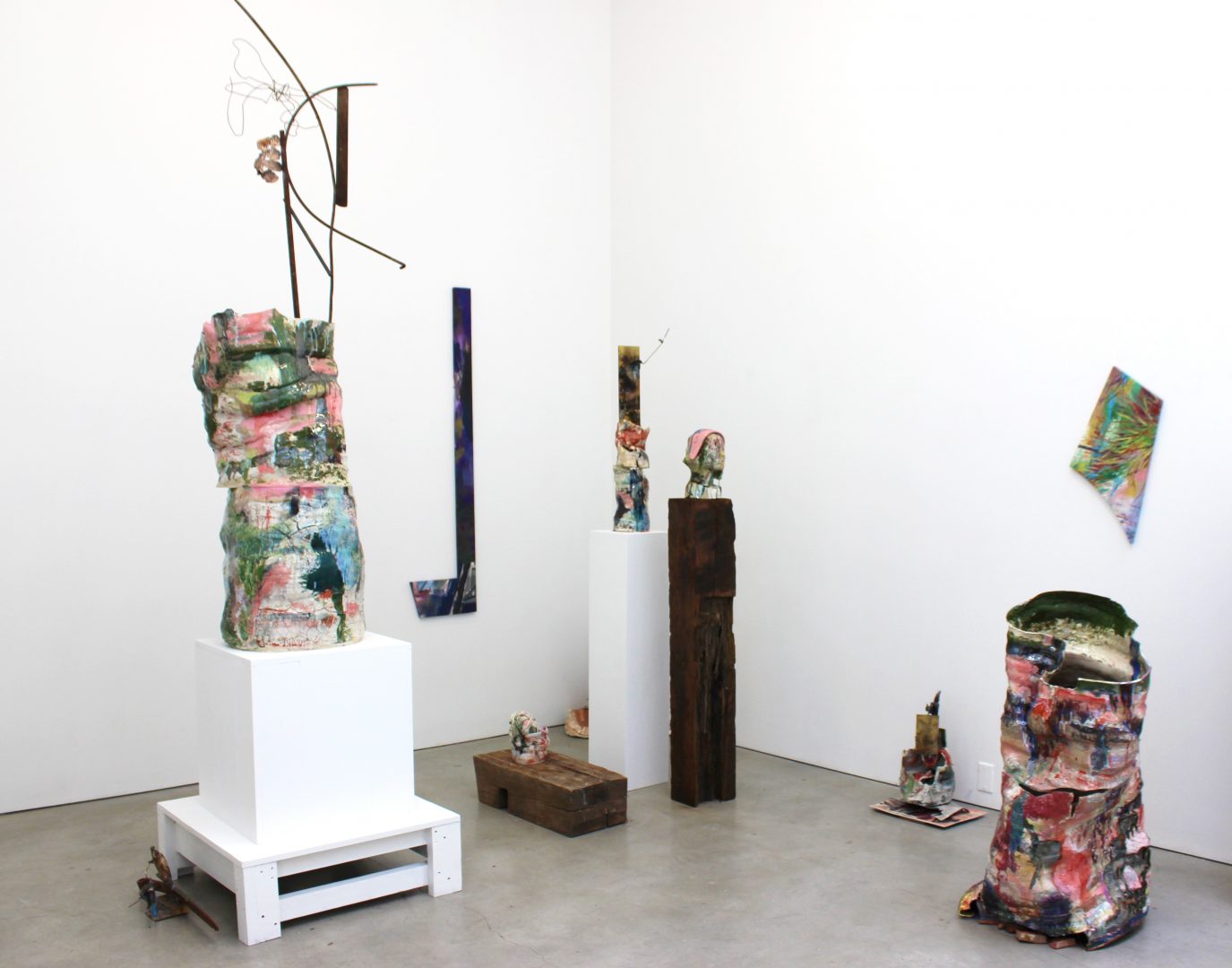
Installation View.
-
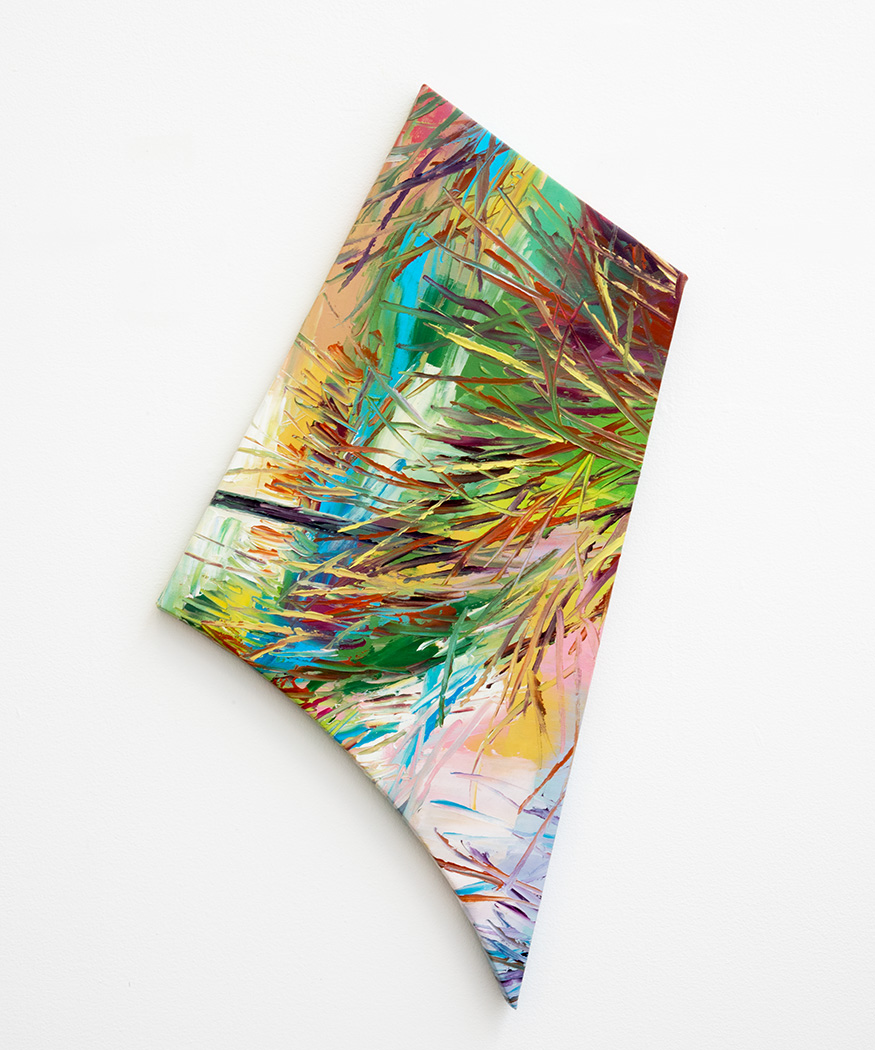
Graham Collins, Untitled, 2016, oil and acrylic on canvas, 24 x 16 in.
-
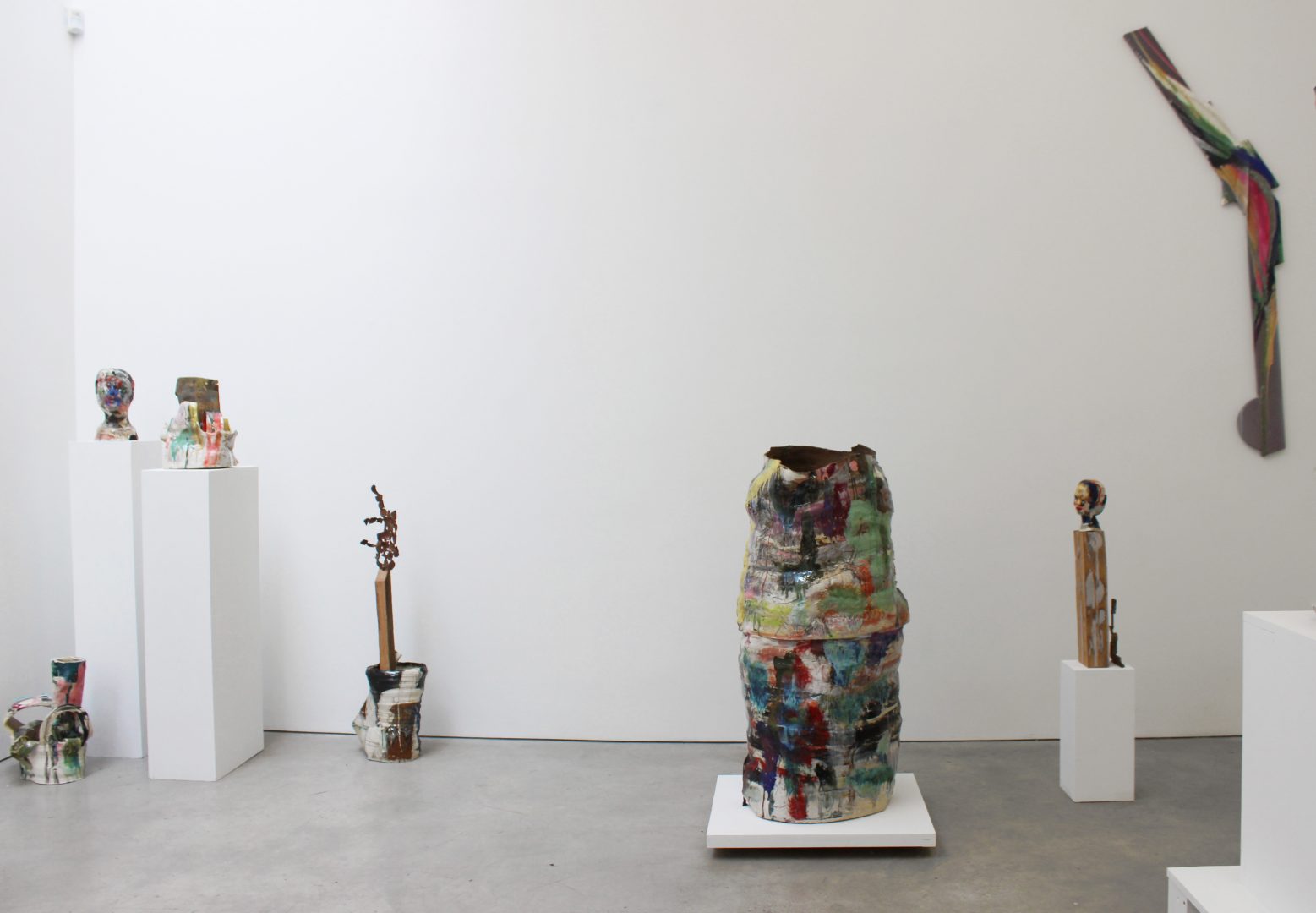
Installation View.
-
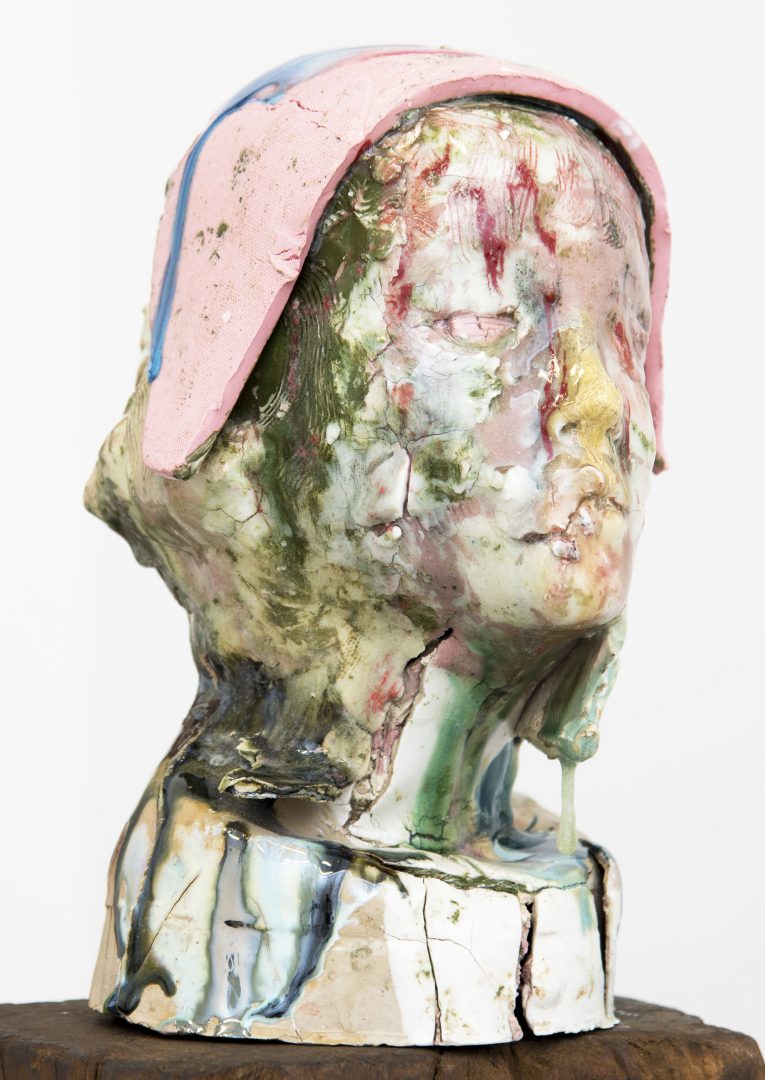
Jennie Jeiun Lee, The Nurse, 2016, slip cast porcelain, glaze, underglaze pencil, colored porcelain, 11 x 7 x 7 in.
-
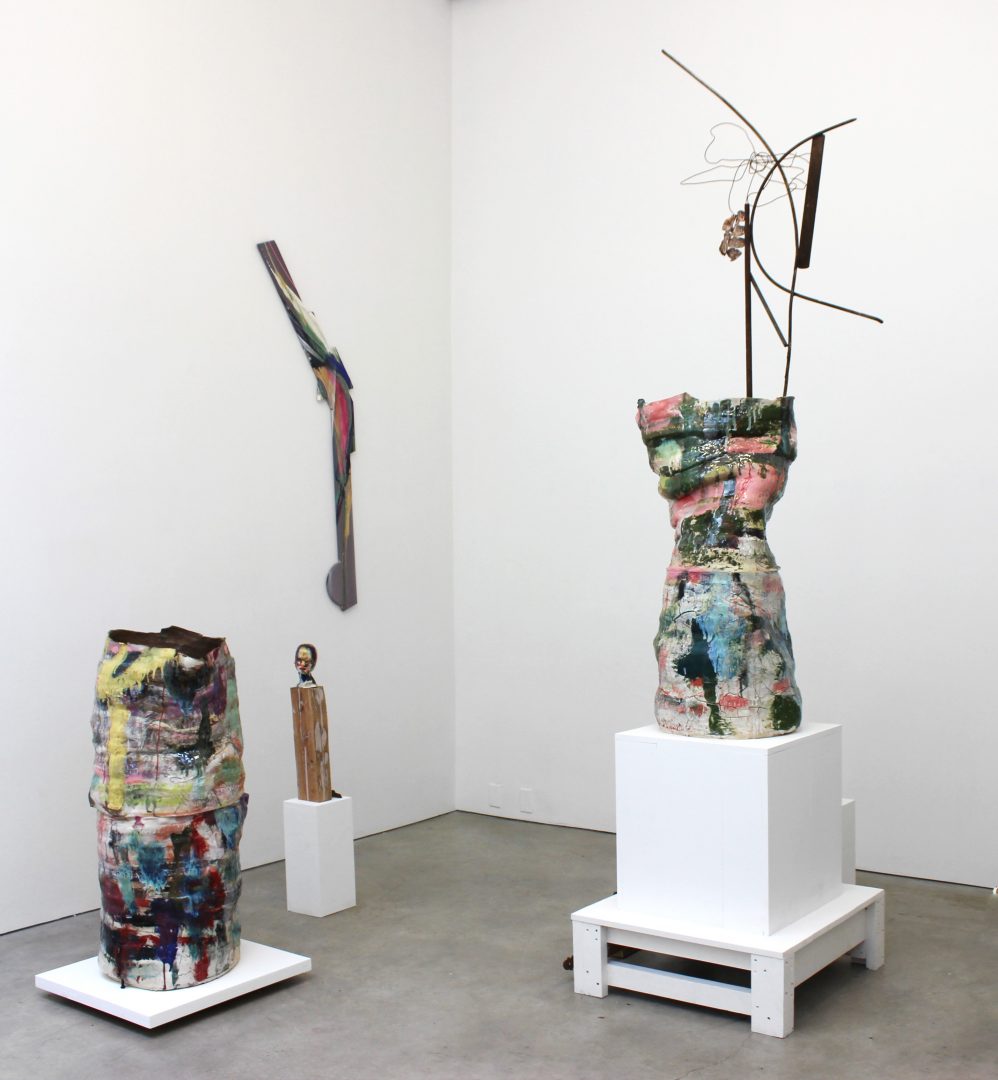
Installation View.